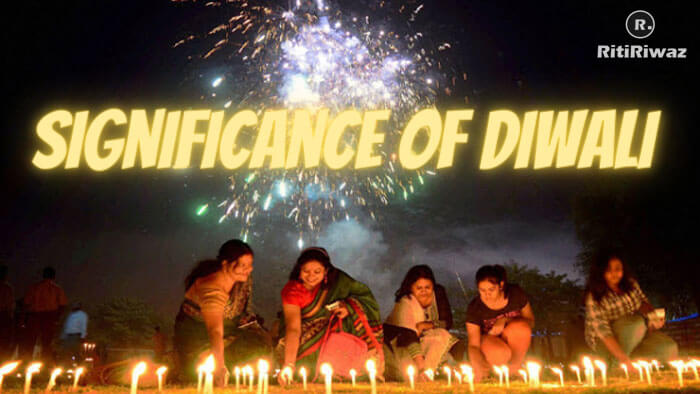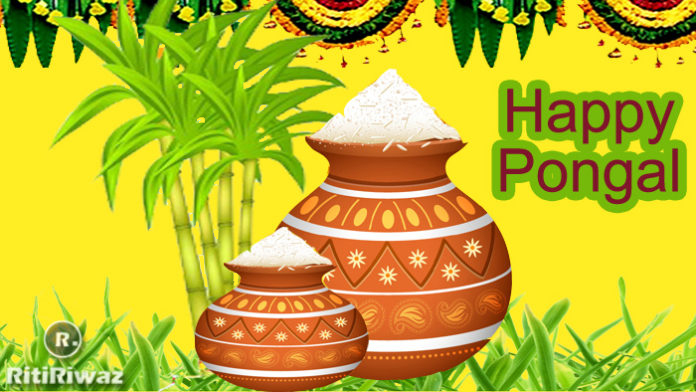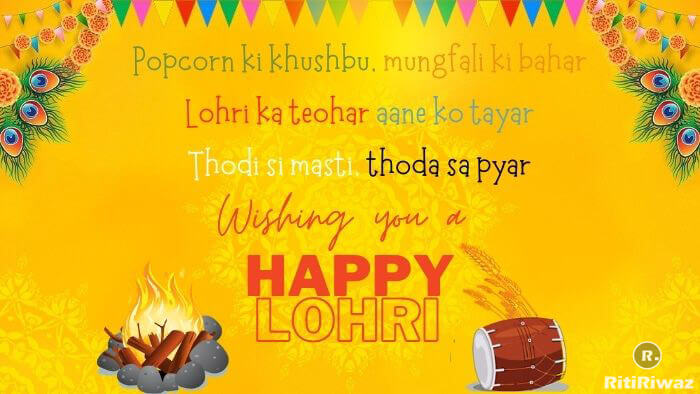Significance Of Diwali

The illuminations and fireworks, joy and festivities, are to signify the victory of divine forces over those of wickedness. On Deepavali day, triumphant Sri Ram returned to Ayodhya after defeating Ravana, the demon of Lanka. On Diwali day, we celebrate the marriage of Goddess Lakshmi with Lord Vishnu.
On Deepavali day, everyone forgets and forgives the wrongs done by others. There is an air of freedom, festivity, and friendliness everywhere. This festival brings about unity. It instills charity in the hearts of the people.
In a happy mood of great rejoicing, village folks move about freely, mixing with one another, all enmity being forgotten. They embrace one another with love. Deepavali is a great unifying force. The holy vibrations produced by the greetings of love fill the atmosphere and are powerful enough to bring about a change of heart in every man and woman in the world.
On Deepavali day, merchants open their new account books and pray for success and prosperity during the coming year. The homes are cleaned and decorated by day and illuminated at night. During the Deepavali festival is celebrated the Govardhan Puja signifying the Govardhan episode in Sri Krishna’s life, and also Anna Koot (heap of grains and foods) conveying affluence and prosperity; and feeding the poor on a large scale.
Light is a symbol of divinity, knowledge in contrast to the darkness that signifies evil, sorrow, ignorant. It is natural to feel well and bright when the place is well lit, unlike the feeling of depression and low when the place is too dark. Light brings inner happiness, health, joy, and prosperity along with its link to divinity.
Beyond Lights and Lakshmi prayer Diwali is a great time to reflect on life and make changes. Diwali is not only a festival to honor Devi Lakshmi, Goddess of wealth but also a time for making the house clean and repainted, women buy gold, silver, and utensils on Dhan Teras and not only invoke the Goddess of wealth by prayers but also physically running the home in a better way.
“Om asato ma sadgamaya, Tamaso ma jyotir gamaya, Mrityor ma amritam gamaya.”
Lead us from falsehood to truth; from Darkness to light; from death to immortality and from Lethargy to Activity.
The essential principle of Vedic culture is eternal, universal, and is applicable to the past, present, and future. The alternate for the Vedic culture is Human culture or Universal culture.
Where the aspects of human personality are fourfold: there are four goals of life (dharma, artha, kama & moksha).
Four Yogas (karma yoga, bhakti yoga, raja yoga, and gnana yoga).
Four Vedas (Rig Veda, Sam Veda, Yajur Veda & Atharva Veda).
Four ashramas (Brahmacharyashrama, Grahasthashrama, Vanprasthashrama & Sanyasashrama.
Four Varnas (Brahman, Kshatriya, Vaisya & Sudra); four yugas (Krata yuga, Treta yuga, Dwapar yuga, and Kali yuga).
There are also four universally observed parvas (festivals) namely Shravani Upakarma, Vijayadashami, Deepawali, and Holi. Parva means a link that joins two things. It is the link on which the skeleton stands. The joints of a man’s skeleton are, therefore, called parvas.
It is with the help of these that an individual can stand, can sit, can bend, and can lunge. Without these joints, man would be stiff and not be able to make any movements. Likewise is the state of nations and societies, the framework of which is based on parvas (festivals). Without these parvas society would have collapsed a long time ago.
These four festivals commence with Upakarma (Raksha-Bandhan) and end with Holi. The four festivals are associated with four different goddesses. Raksha-Bandhan is associated with Goddess Saraswati (the goddess of education); Vijayadashami with Shakti (goddess of power); Holi with Prasannata (goddess of joy) and Deepawali is associated with Lakshmi (goddess of wealth). Raksha-Bandhan or Shravani is directed at spiritual education, Vijayadashami at military education, Deepawali at economic education, and Holi at the cultural education of the masses. As long as humanity is not moved with inner satisfaction and joy so long there would exist defects in the imparting of spiritual, economic, and cultural education.
According to Vedic culture the message of Asato ma sad gamaya (lead us from falsehood to Truth) through the parva of Shravani; of Mrityorma amritam gamaya (from death to immortality) through the parva of Vijaydashami; of Tamaso ma jyotir gamaya (from darkness to light) through the parva of Deepawali; and of Alasyatma shrama gamaya (from lethargy to activity) through the parva of Holi, is conveyed to the masses.
The message of Diwali
According to the Vedic culture, the message of Tamaso ma jyotir gamaya (from darkness unto light) is given through the festival of Deepawali to all peoples of the world. During the night of Deepawali, the myriads of little clay lamps (diyas) seem to silently send forth Deepawali messages: Come let us remove darkness from the face of the earth. This is not the work to be done by one dia or by one individual. It requires a collective effort. In the diffusion of light, the question of high and low is forgotten.
This is the lesson taught by both small and big diyas. The second message of the burning diyas is to destroy the difference between rich and poor- the destruction of discrimination based on poverty and wealth. The burning dia, whether in a palatial bungalow or in a grass hut, is a symbol of this unity. The wall of separation based on economic status cannot prevent the penetration and spread of the light of the dia.
The third message of the burning Diya of Deepawali is to kindle the extinguished lights of our neighbors. Let us find out what is needed- whether there is a shortage of wick or oil- and just by a little help, the neighbor’s lamps can be lit. One dia can light several others. A little charity can bring joy to countless others.
The row of lamps teaches yet another lesson and that is of unity as exemplified in Satyam, Shivam Sundaram- Truth, Joy, and Beauty. The lights of Deepavali are displayed at the entrance doors, by the walls of houses, in the streets, and in lanes. This means that the inner spiritual light of the individual must be reflected outside. Passersby may thereby be prevented from stumbling on their way to reach their destination. The lights of the Diyas on earth beckon the lights in the firmaments to descend upon earth and establish the heavenly kingdom of God for the welfare of the human race.
Feeding empty stomachs, lighting blown-out Diya, and providing cheer and joy amongst the downtrodden is to enter the true spirit of Deepavali. This is the true prayer to Lakshmi Devi.






